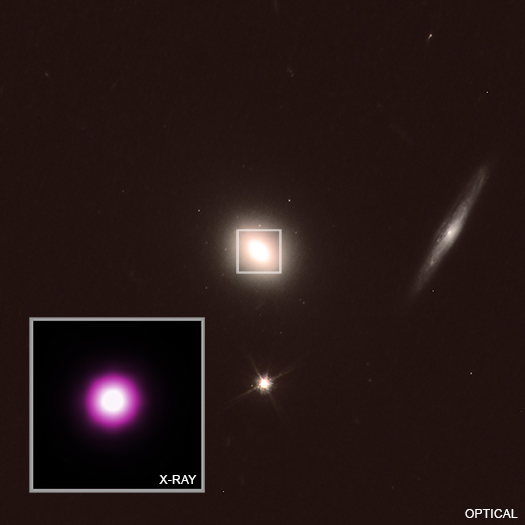Artist's impression of the remainder of a star orbiting a black hole. Image: NASA
NASA astronomers have observed a supermassive black hole that is rotating at least 380 million miles per hour, or at half the speed of light.
To put that in perspective, that means the black hole—with a diameter 300 times larger than Earth—completes a rotation roughly every two minutes.
As detailed in a paper published Wednesday in Science, the team took the unprecedented measurement of the black hole’s rotation using observations from a suite of space-based x-ray observatories, including NASA’s Chandra telescope.
Astronomers were able to observe over 300,000 rotational cycles, giving the most precise measurement of a supermassive black hole ever taken.
The black hole, located about 290 million light years from Earth, first came to astronomers’ attention in 2014 after a strong burst of light was detected by optical telescopes. Upon closer investigation, astronomers discovered that the light was the result of a star getting torn to shreds by a supermassive black hole.

An optical and x-ray image of the black hole. Image: NASA
As the rest of the star fell toward the black hole’s event horizon, the astronomers were able to monitor the X-ray emissions the hole produced using the Chandra and two other space-based telescopes. (Beyond the event horizon, no light or other energy can escape the immense gravitational force of the black hole.)
Since black holes themselves don’t emit any light or other energy, the only way to measure their rotational speed is by watching other objects orbit around them and extrapolating from those observations to determine how fast the black hole is spinning. The scientists noticed that the X-rays would spike every 131 seconds, which they attributed to hot gas orbiting the black hole that acted as a sort of beacon.
Read More: A Black Hole Twice the Size of the Sun Has Been Shredding a Star for a Decade
This isn’t the first time that scientists have used variations in X-ray emissions to measure the spin of a black hole. Previously, however, these types of observations were limited to black holes only a few times more massive than the Sun. Although a few supermassive black holes have also been observed in this fashion, astronomers have only been able to record a few rotational cycles, which decreases the certainty of those black hole’s rotational speeds.
According to a statement released by NASA, the researchers involved in the project hope that this will encourage astronomers to look for similar events and better understand how stars interact with black holes.
Bagikan Berita Ini















0 Response to "Astronomers Discover a Supermassive Black Hole Rotating At Half the Speed of Light - Motherboard"
Post a Comment